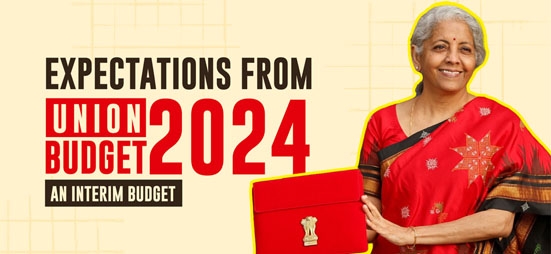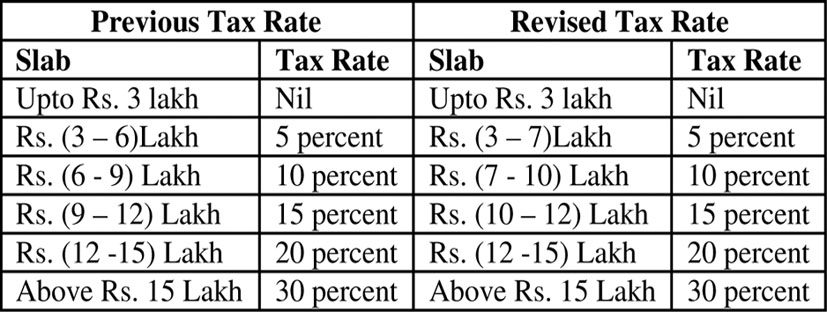Union Budget 2024 and Income Tax
|

Salam Prakash
On 23rd July 2024, Finance Minister Nirmala Sitharaman presented the Union Budget 2024, which is her seventh one. She made a record of being the first Finance Minister in India to present a Union budget for the seventh consecutive time. Moraji Desai was the earlier record holder with six times.
Among the various changes that were announced, one of the most awaited announcements was on income tax.
To the relief of
many of the salaried individuals, this
year's budget has announced some changes to the New Tax Regime which might bring smiles to their faces.
The first announcement that was made regarding the income tax was an increment in the standard deduction from Rs 50,000 to Rs 75,000. Changes have been made to the tax slab too. The comparison between the previous tax slab and the revised tax slab is presented in the table

Under the revised new tax regime, individuals having an annual income below Rs 7.75 lakh do not have to pay taxes with the rebate under section 87A. Rebate under section 87A provides a tax relief of Rs 25,000 for individuals whose taxable income is less than Rs 7 lakh. The subtraction of Rs 75,000 (standard deduction) from the gross income gives a taxable income amounts to Rs 7 lakh. The Rs 7 lakh annual income has a total income tax of Rs 25,000 thereby cancelling with the rebate provided under section 87A.
Now the taxable amount will starts from an annual income higher than Rs 7.75 Lakh. The Finance Minister announced that with the revised tax rate, “a salaried employee in the new tax regime stands to save up to Rs 17,500 in income tax”. Of course, this benefit is not going to applicable to all the tax payers at a flat rate. Certain income brackets will have different rates of benefits. An individual with an annual income of Rs 8 lakh will enjoy a benefit of Rs 7,800. After the subtraction of the standard deduction, the taxable income is Rs 7.5 lakh in the previous tax rate and Rs 7.25 lakh in the revised tax rate.
In the previous tax rate:
Income between Rs. (3-6 lakh) @ 5% is Rs. 15,000Income between Rs (6-9 lakh) @ 10% for (Rs 7.5 – 6) lakh is Rs. 15,000,
With a cess of 4% the total tax is Rs. 31,200
In the revised tax rate : Income between Rs (3-7 lakh) @ 5% is Rs 20,000
Income between Rs (7-9 lakh) @ 10% for (Rs 7.5 – 7.25) lakh is Rs 2,500, with a cess of 4% the total tax is Rs. 23,400
The difference between Rs. 31,200 - Rs. 23,400 is Rs. 7,800
This benefit will goes on increasing along with the increase in income such as Rs 10,400 and Rs 14,300 for the Rs 10 lakh and Rs 11 lakh annual income respectively. The increment in the benefit will peak at the annual income of Rs 16 lakh and then flatten out. Anomalous to the announcement made by the Finance Minister, the
calculation shows that the income tax benefit with the revised rate can go up to Rs 18,200 rather than Rs 17,500. The figure shows the tax benefits at the different levels of income.
The benefit from the revised tax rate will lead to an increase in the disposal income of salaried individuals. It not only is a welcome approach for the salaried individuals but it will be beneficial for the economy as well. One school of thought in economics namely Keynesian economics advocated the measures to increase the disposable income as it will bring about a boost in the consumption expenditure and the resulting aggregate demand.
The private consumption expenditure holds the major share of aggregate demand of an economy, other components are investment, Government expenditure and balance of trade. The CIEC data shows that private consumption
in India contributes about 60 per cent of its nominal gross domestic product. Recently in March 2024, there has been a decline to the tune of 57.9% as compared to the 63.5% in the previous quarter ie December 2023.
The new tax rate might bring about some revival in the private consumption pattern and the economy as well. Considering the notion, the prospect of the Indian economy, in terms of income, seems to be promising.
However it remains to be seen, what it might bring about. This is why the aspect of ex-ante and ex-post is so popular in economics.

